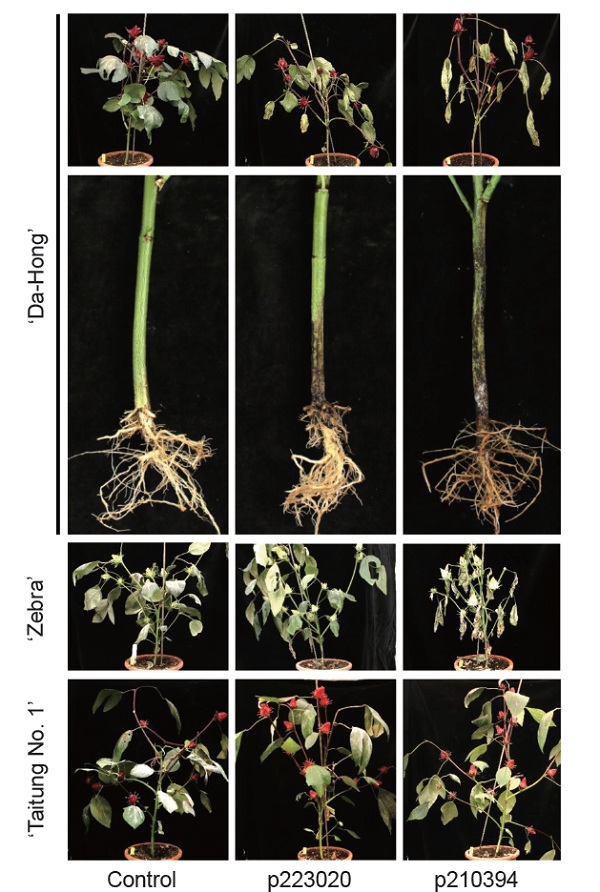Current issue

Author:Hui-Ling Tsai, Yue-Mei Zhan, Yi-Wei Hsu, Jin-Hsing Huang, Jyh-Nong Tsai, Pao-Jan Ann, Jing-Wen Chen, and Chu-Ping Lin*
Abstract:
Roselle (Hylocereus spp.) is an important specialty crop in Taiwan. A field survey conducted in central Taiwan revealed that during the rainy season, roselle plants frequently developed blight symptoms including wilting, browning at the base of the stems, and root rot with brown discoloration. At an advanced stage, affected plants were desiccated and died resulting in severe yield loss. Most isolates of the roselle blight pathogen obtained in recent years were identified as A1 mating type, while those isolated earlier were A2 mating type. Pathogen identification was performed using morphological traits and molecular sequencing, and with the fulfillment of Koch’s postulates Phytophthora nicotianae (= P. parasitica) was confirmed as the causal agent. Pathogenicity varied among isolates, and disease severity were influenced by factors such as the presence of wounds. Resistance screening using moderately virulent isolates showed that roselle cultivars differ in their susceptibility to P. nicotianae. Among the 7 common cultivars tested, ‘Taitung No. 2’, ‘Taitung No. 3’, and ‘Taitung No. 4’ exhibited the highest level of resistance, while ‘Da-Hong’ and ‘Zebra’ were the most susceptible ones. ‘Taitung No. 1’ displayed a moderate level of susceptibility.
Key words:Roselle blight, Pathogenicity test, Variety resistance and susceptibility
Download:![]() PDF Links
PDF Links
 Submit your manuscript
Submit your manuscript
 Guide for authors
Guide for authors